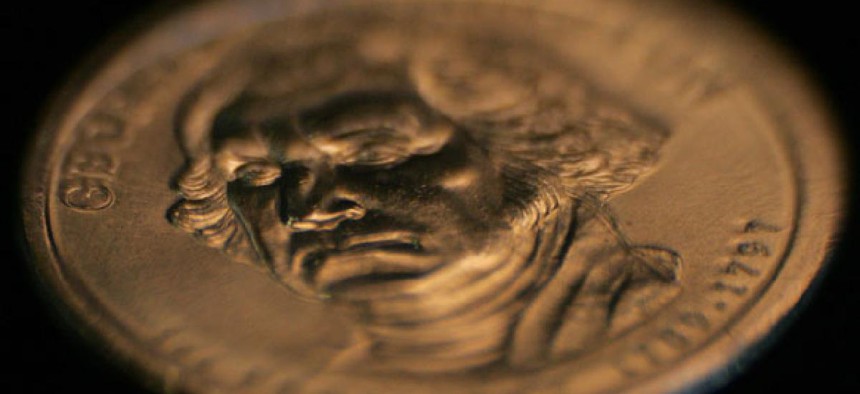
Branimir Kvartuc/AP
Why We Haven't Switched to Dollar Coins
Five times in the past 22 years, the Government Accountability Office has reported that switching from paper $1bills to dollar coins would save the government money -- measured in the hundreds of millions of dollars per year. So why hasn't Uncle Sam made the switch? That's where the story gets complicated.
Five times in the past 22 years, the Government Accountability Office has reported that switching from paper $1bills to dollar coins would save the government money -- measured in the hundreds of millions of dollars per year. So why hasn't Uncle Sam made the switch? That's where the story gets complicated.
For one thing, GAO notes in a new report, the savings aren't what they used to be. Less than a year ago, GAO estimated that shifting away from the paper buck would save about $5.5 billion over 30 years, or $184 million a year. But now the auditors say the figure is $4.4 billion over three decades, or $146 million a year.
Why the difference? Well, the savings associated with switching from paper to coins come down to what's known as "seigniorage," the term for the difference between the face value of a piece of money and the cost of producing it. Paper notes have relatively lower seigniorage because they wear out faster than coins. But GAO notes in the new report that it had to lower its estimate of seigniorage savings because recent improvements have extended the life expectancy of paper bills. (The report also said "other updated information" factored into the revised estimate.)
The other problem with making the switch to a dollar coin is that it would take awhile to realize the savings. GAO's study showed that making the change (so to speak) would result in a net loss to the government of $531 million in the first 10 years before savings started to kick in. And especially these days, spending money to save money just isn't that appealing to Congress.
NEXT STORY: Where Are All the Government Workers?







